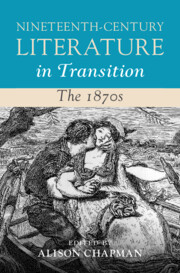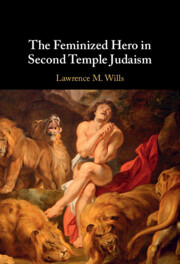Refine search
Actions for selected content:
165 results
Chapter 16 - The People’s War
- from Part IV - In the Name of the People
-
-
- Book:
- 'The People' and British Literature
- Published online:
- 11 December 2025
- Print publication:
- 11 December 2025, pp 257-272
-
- Chapter
- Export citation
Chapter 17 - The Voices of the People
- from Part IV - In the Name of the People
-
-
- Book:
- 'The People' and British Literature
- Published online:
- 11 December 2025
- Print publication:
- 11 December 2025, pp 273-290
-
- Chapter
- Export citation
Conclusion
-
- Book:
- American Narrative Realism
- Published online:
- 17 November 2025
- Print publication:
- 04 December 2025, pp 141-158
-
- Chapter
- Export citation
Chapter 3 - Print Fiction
-
- Book:
- American Narrative Realism
- Published online:
- 17 November 2025
- Print publication:
- 04 December 2025, pp 60-85
-
- Chapter
- Export citation
4 - Travel Narratives and the Early Novel
- from Part I - Early Intimations and Literary Genres: 1500–1800
-
-
- Book:
- The Cambridge Companion to British Literature and Empire
- Published online:
- 20 November 2025
- Print publication:
- 04 December 2025, pp 64-76
-
- Chapter
- Export citation

American Narrative Realism
- The Novel, Film, Television, and Theater
-
- Published online:
- 17 November 2025
- Print publication:
- 04 December 2025
Chapter 13 - Kantian Strains in Stages on Life’s Way
- from Part III - Kierkegaard and the Concept of Thought Experiment
-
- Book:
- Kierkegaard and the Structure of Imagination
- Published online:
- 26 September 2025
- Print publication:
- 16 October 2025, pp 214-229
-
- Chapter
- Export citation
Use of Tetflupyrolimet to Manage Herbicide-resistant Echinochloa crus-galli Biotypes in Arkansas Rice
-
- Journal:
- Weed Technology / Accepted manuscript
- Published online by Cambridge University Press:
- 13 October 2025, pp. 1-24
-
- Article
-
- You have access
- Open access
- Export citation
Chapter 3 - Fossil Fuels and the Fiction of Extraction
- from Part I - Origins
-
-
- Book:
- Commodities and Literature
- Published online:
- 14 October 2025
- Print publication:
- 09 October 2025, pp 61-75
-
- Chapter
- Export citation
Chapter 10 - Revival in the West
- from Part III - Mythologies of the Literary Revival
-
-
- Book:
- The Revival in Irish Literature and Culture
- Published online:
- 04 September 2025
- Print publication:
- 18 September 2025, pp 203-221
-
- Chapter
- Export citation

Zola's Dream
- Idealism on Trial
-
- Published online:
- 07 August 2025
- Print publication:
- 21 August 2025
Chapter 10 - The First Filipino and the Archive
- from Part III - Transgressing
-
-
- Book:
- Latinx Literature in Transition, 1444–1886
- Published online:
- 06 August 2025
- Print publication:
- 17 July 2025, pp 231-251
-
- Chapter
- Export citation
Part 3 - The Orificial
- from An Opening
-
- Book:
- A Funny Thing
- Published online:
- 16 May 2025
- Print publication:
- 05 June 2025, pp 179-258
-
- Chapter
- Export citation
Chapter 4 - Anthropologies of the Mechanical Arts
-
- Book:
- Satire, Instruction and Useful Knowledge in Eighteenth-Century Britain
- Published online:
- 24 April 2025
- Print publication:
- 08 May 2025, pp 84-108
-
- Chapter
-
- You have access
- Open access
- Export citation
Chapter 7 - The Art of Teaching to Invent
-
- Book:
- Satire, Instruction and Useful Knowledge in Eighteenth-Century Britain
- Published online:
- 24 April 2025
- Print publication:
- 08 May 2025, pp 169-198
-
- Chapter
-
- You have access
- Open access
- Export citation
Chapter 6 - Manuals of Mock Arts
-
- Book:
- Satire, Instruction and Useful Knowledge in Eighteenth-Century Britain
- Published online:
- 24 April 2025
- Print publication:
- 08 May 2025, pp 135-168
-
- Chapter
-
- You have access
- Open access
- Export citation

Nineteenth-Century Literature in Transition: The 1870s
-
- Published online:
- 30 January 2025
- Print publication:
- 06 February 2025
Chapter 14 - Tasteful Sketches and Tasteless Ambition
-
-
- Book:
- The New Nineteenth-Century American Literary Studies
- Published online:
- 02 January 2025
- Print publication:
- 23 January 2025, pp 203-215
-
- Chapter
- Export citation
Chapter 18 - Rethinking Black Speculative Fiction
-
-
- Book:
- The New Nineteenth-Century American Literary Studies
- Published online:
- 02 January 2025
- Print publication:
- 23 January 2025, pp 265-280
-
- Chapter
- Export citation

The Feminized Hero in Second Temple Judaism
-
- Published online:
- 09 January 2025
- Print publication:
- 23 January 2025
